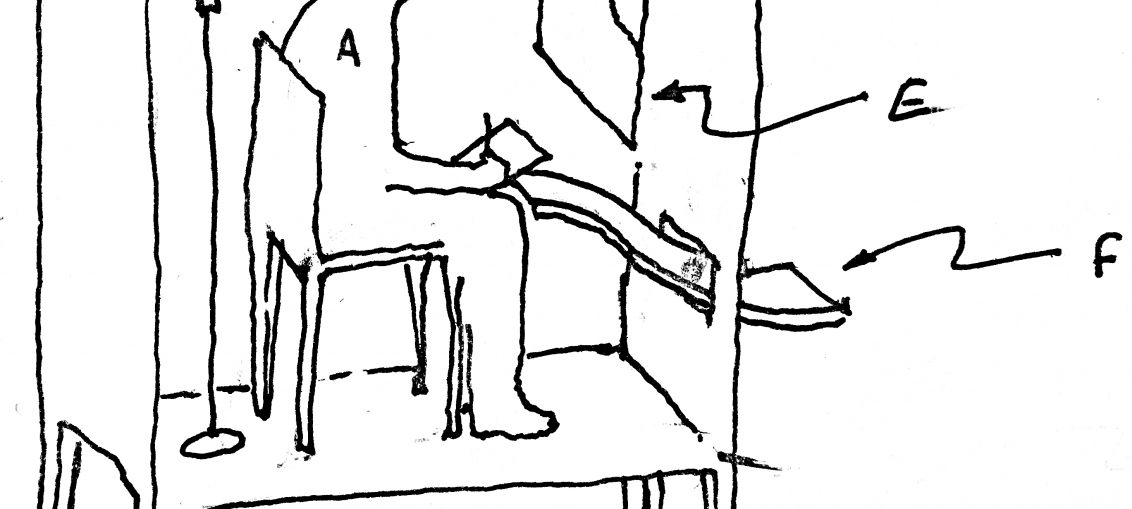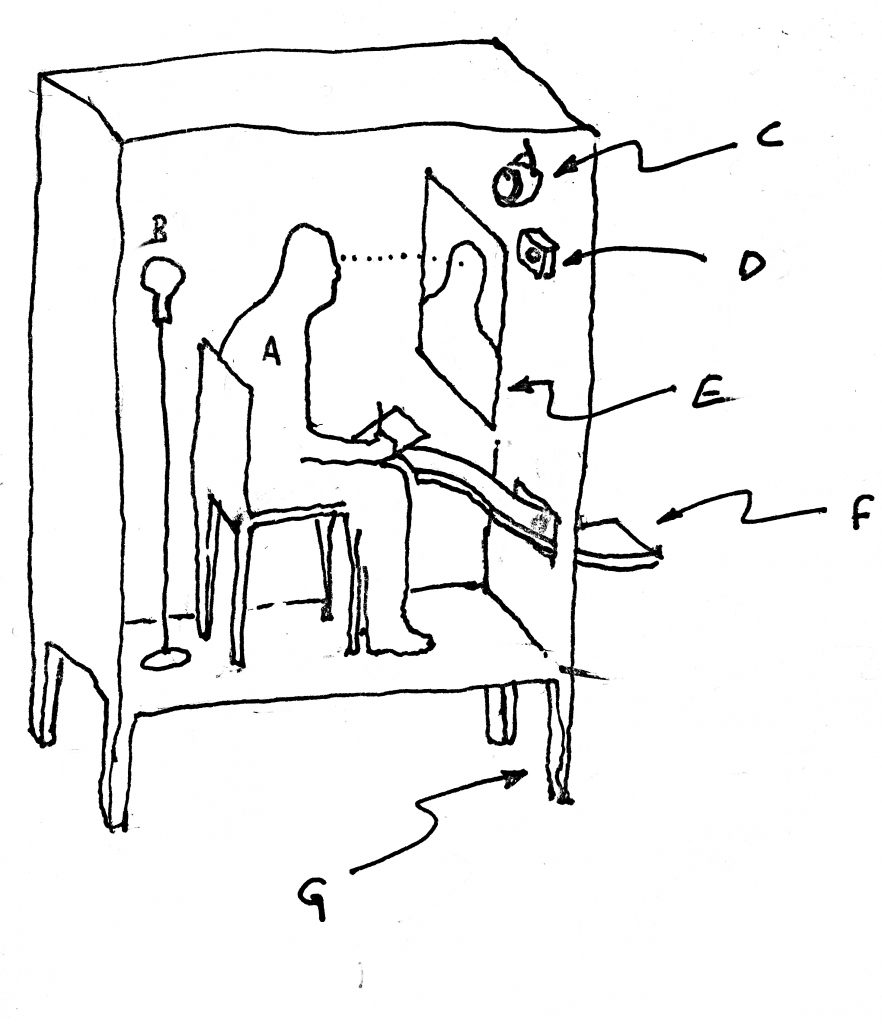
The mirror gaze experiment requires the participant to sit in a near dark room and to stare at their own reflection for a set amount of time while listing to white noise. After only a short amount of time most people experience powerful illusions of facial distortion, grossly exaggerated features, faces of animals, the face of a lion or Darth Vader for example. These emerge as if from nowhere, disappearing at the slightest movement or eye blink, before manifesting new forms. These flowing cascades of illusory effects can elicit powerful emotional responses.
In my own research, the mirror gaze experiment has resulted in significant illusory experiences across the full range of participants. I documented the way in which the illusory experience seems to emerge and evolve over time, and how in each case a distinct emotional response was recorded. A further observation was the effect of sound on the experiment and some reports of subtle auditory hallucinations, micro tones and the sound of music or faint voices in the distance. Was it possible that the sound itself was affecting the illusion?
A new experimental set up for the mirror gaze experiment is proposed which allows the real time illusory experience to be observed:
[i] The science behind this illusion is based on a complex interaction between perceptual and adaptive neural processes. Theories suggest that emergent visual noise generated in the retina, results in the perception of a continually moving field of black and white dots. A phenomenon known as Eigengrau [German ‘intrinsic grey’]. Neural adaption occurs when fixating on an image, making us become more actively aware of the most minute changes. These in combination with involuntary micro movements of the eyeball causes these emergent visuals, to fade in and out of focus, and can give the effect of movement. It is also human nature to make sense out of random and ambiguous patterns, which often manifest in ways specific to our own personal experiences.

Mirror gaze experiment: (A) Seated participant (B) Dimmable lightbulb (C) Infrared spotlight D) Night vision camera (E) Two-way Mirror (F) Chute, down which notes are passed from the participant (G) elevated legs
Mirror gaze experiment: Installation description
The mirror gaze box is a wardrobe like construction surrounded with a black curtain and elevated on short legs. Once inside participant gazes at their own reflected face, in a mirror in low light levels for around 15mins while listening to white noise.
A night vision camera (D) concealed behind a 2-way mirror [E], films the participants face as they gaze at themselves in near darkness. This is enhanced using movement detection, highlighting the smallest of movements and expression. This is relayed to a screen outside for observation. Sensors collect galvanic skin response [GSR] and heart rate [HR] data, which is fed back into a generative sound programme which the participant listens to. This is designed to mask out the surrounding environment but also reacts in real-time to the emotional responses of the participant.